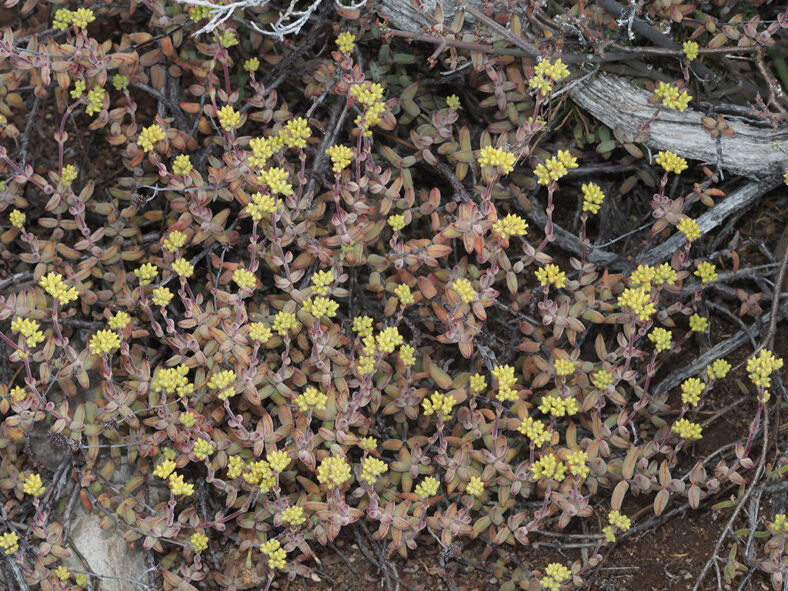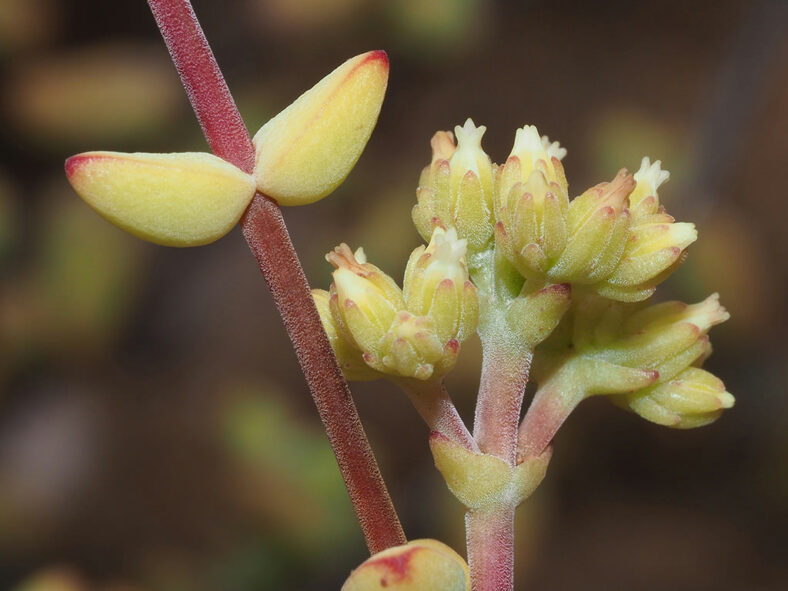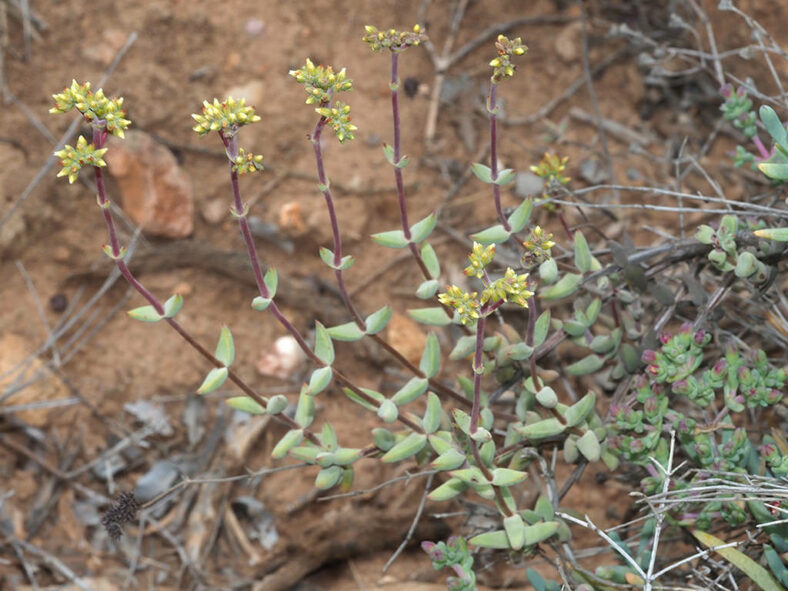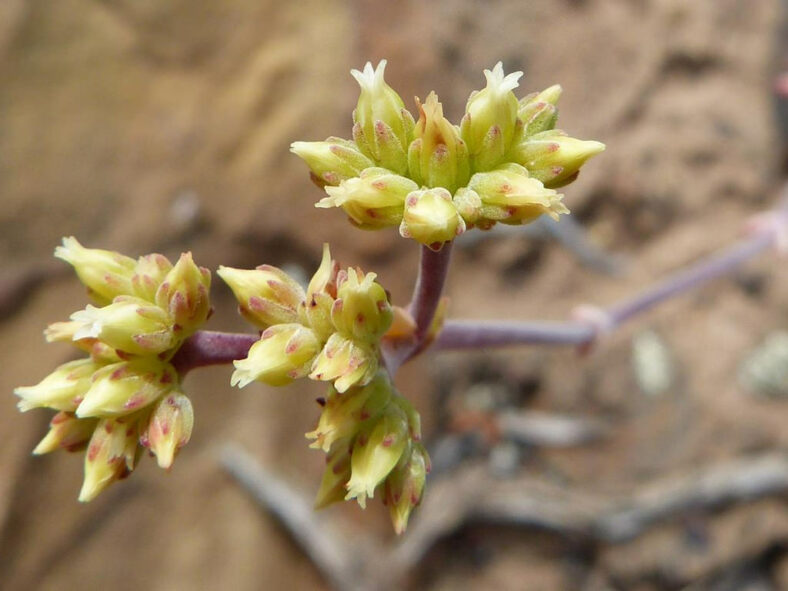There are two recognized subspecies of Crassula subaphylla. Crassula subaphylla var. subaphylla has a decumbent or climbing habit, leaves that spread at about right angles to the branches. Its stems and leaves are typically covered with short, recurved, adpressed hairs. On the other hand, Crassula subaphylla var. virgata has an erect habit with smooth stems and smooth and somewhat longer leaves that curve upwards.
Scientific Name
Crassula subaphylla (Eckl. & Zeyh.) Harv.
Synonym(s)
Crassula subaphylla var. subaphylla, Globulea subaphylla, Sphaeritis subaphylla
Scientific Classification
Family: Crassulaceae
Subfamily: Crassuloideae
Genus: Crassula
Etymology
The specific epithet "subaphylla (sub-a-FIL-uh)" means " having underlying leaves" and probably refers to the leaves that break off easily.
Origin
Crassula subaphylla is native to central Namibia and South Africa (Little Karoo and Great Karoo). It grows on stony slopes or flats, often clambering inside bushes.
Description
Crassula subaphylla is a succulent shrub with wiry-woody branches and fleshy, opposite leaves spreading at about right angles to the branch. It can grow up to 32 inches (80 cm) tall and may scramble a little where support is available. The stems are decumbent to erect, finely pubescent, and with old leaves deciduous. The leaves are narrow to broadly lanceolate or rarely linear, only slightly curved upwards, measuring up to 1.6 inches (4 cm) long and 0.2 inches (0.5 cm) wide. They are green, grey-green to brown, usually covered with short, recurved, adpressed hairs.
In the spring, the plant produces small, flat-topped clusters of tiny cream-colored flowers in 3- to many-branched inflorescences with downy peduncles that can grow up to 0.6 inches (15 cm) long.

How to Grow and Care for Crassula subaphylla
Light: Crassula subaphylla prefers full sun to partial shade. However, avoid intense afternoon sun during the hot summer days, as it can burn the leaves. If you are growing this plant Indoors, place it in a window with at least 6 hours of direct sunlight.
Soil: This plant is not particular about soil pH, but it does require soil that is very porous and has excellent drainage. You can use commercial soil mix for succulents or create your own.
Temperature: While this succulent can tolerate average summer temperatures and short-term freezing, extreme cold or heat can cause it to lose leaves and even die. Crassula subaphylla grows best in USDA Plant Hardiness Zones 10a to 11b, with average minimum winter temperatures ranging from 30 to 50 °F (-1.1 to 10 °C).
Watering: Avoid overwatering using the "soak and dry" method to keep the plant healthy. Water deeply and then let the soil completely dry out before watering again. Reduce watering in winter. The potted plants require more frequent watering than those in the ground.
Fertilizing: While Crassula subaphylla does not require high levels of nutrients, it will benefit from a small amount of organic fertilizer in mid-spring when it starts actively growing.
Repotting: Repot the plant as needed, preferably in spring, at the beginning of the growing season. Make sure the soil is dry before beginning to repot.
Propagation: This plant can be propagated by leaves, stem cuttings, or seeds. The easiest method is using leaves, but stem cuttings will produce larger plants more quickly. These methods are most successful at the beginning of the growing season, while spring and summer are ideal for sowing seeds.
Learn more at How to Grow and Care for Crassula.
Toxicity of Crassula subaphylla
Crassula subaphylla is considered non-toxic and is safe for growing around children and pets.
Varieties
Links
- Back to genus Crassula
- Succupedia: Browse succulents by Scientific Name, Common Name, Genus, Family, USDA Hardiness Zone, Origin, or cacti by Genus
Photo Gallery
Click on a photo to see a larger version.


